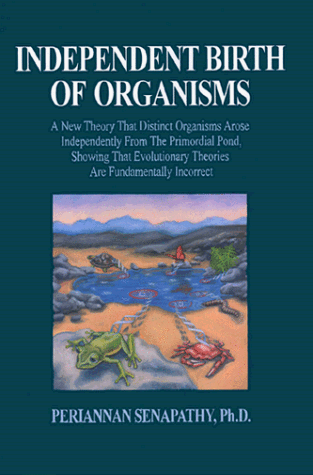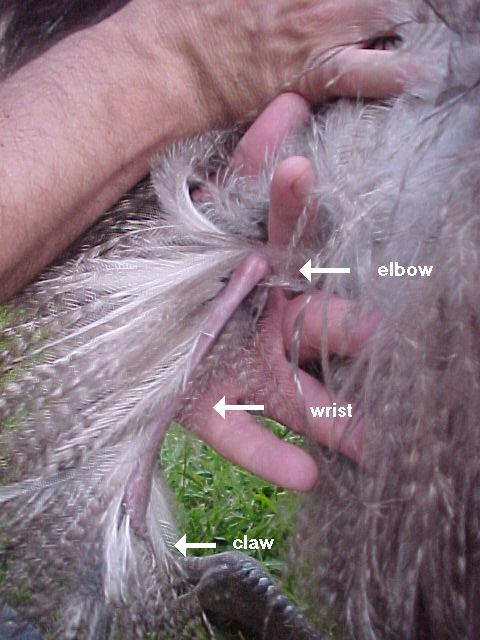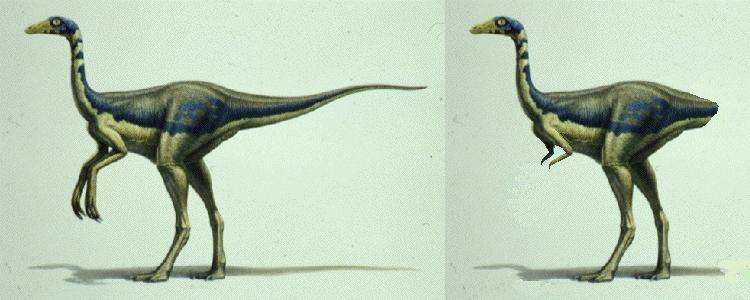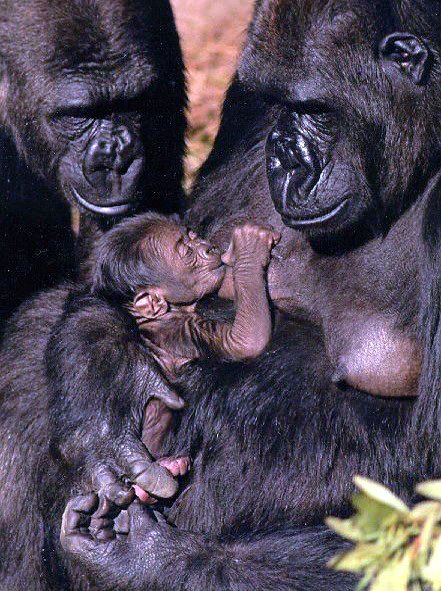Aron-Ra said:
I know a good deal about evolution. But how organic molecules and nucleotides came together to form DNA is a whole other process. Life couldn't evolve as we know it until DNA became part of the equation. We have no good theories to explain the formation of life and genetics to that point. But we've got a really solid argument for what happened after that.
Oncedeceived said:
Perhaps, but as with any good theory one must have the basic foundation to form the "house" so to speak. Now if we are all decendants that began with the RNA/DNA equation and the story goes on from there we must have the beginning to start this process. If RNA/DNA is the "beginning" we must have the story of this beginning...right? If we don't have this first evolutionary step that is a gap and you told me in the other thread that there are no gaps in the theory.
I said there were no 'significant' gaps. I am aware of some gaps, but they're not significant ones. For example, I'm anxious to see the missing link between Mixopterycean eurypterids and Devonian aquatic scorpions. But what you're talking about is not a gap of any kind. Evolution is defined as the change in allele frequencies in a population over time/generations. By definition, no alleles = no evolution. Therefore, as I said, the formation of DNA is an entirely different process.
However, as I told JohnR7 earlier in this thread, I do know that cellular membranes are made of a phospholipid bilayer, and that these form automatically and immediately upon contact with water due to their molecular polarity. And intracellular transport vesicles also work by what seems to be entirely incidental circumstances. Enzymatic reactions naturally build a system of chemical activity that is greater inside the bilayer than out, leading to the creation of pathways which control energy and require "food" molecules from the surrounding environment. My cellular biology professor said that at its most fundamental level, biology was just chemistry. I also know that the Miller-Urey experiment proved Oparin and Haldane's hypothesis about how an early Earth actually synthesized organic compounds from inorganic precursors. So we have lots of good evidence in support of replicative polymers and peptides already. But I've also seen Eigen and Schuster's model for the
Hypercycle and a number of seemingly sound models for
protobionts. So
the story you're looking for, (and
don't want to find) is out there. Its just that we don't have any really rock-solid evidence of that like we do for evolution. But then, we don't have any better explanations than that either. And I'm not well-versed in abiogenesis, frankly, because chemistry bores me, even when it is this advanced. I study evolution instead. That's the story I'm telling. And that story doesn't begin until DNA is already on the scene.
But I can't resist tossing this out there, since you asked for it. A few months ago, Mark Kennedy showed me this:
"After extensive analyses, astonishing to him, he [Dr. Senapathy] solved the problem of the origin of first living cell on earth-that it was not the bacterium like cell that was the very first life on earth but the eukaryotic cells with nucleus and other paraphernalia and all of their complexity. This finding showed that the branching model of evolution was not necessary to explain the diversity of living forms on earth, and, in fact, that it was basically incorrect. He could show that the same mechanisms that lead to the genome of one eukaryotic cell could lead to the genomes of zygotic cells of many different multicellular organisms. He formulated a new model for explaining the multiple and simultaneous origins of diverse and unique organisms on earth from a given primordial pond-the model of parallel origin of genomes from a common pool of genes. It took him many more years to complete the research and publish all his findings in a book titled Independent Birth of Organisms in 1994 (Genome Press)."

Dr. Senapathy has a
Ph. D. in Molecular Biology and Biochemistry, and once worked on the human genome project as a legitimate scientist, believe it or not. Or at least he was one before he broke away from genetics and proposed his new "theory". What Senapathy proposed is that complex Eukaryotes came before Prokaryotes, (not the other way around) and that both accidentally assembled themselves by falling together in a naturally DNA-rich primordial soup, which he says existed until just before recorded history. Its an interesting notion, not supported by anything, but which he believes he has substantial evidence for. But then he takes a dive right off the deep end, and ignores everything I'm trying to show in this thread by proposing that it wasn't only single-cellular life that came about this way. Senapathy proposed that evolution was "fundamentally wrong" because whole human beings accidentally assembled themselves the same way, and walked out of the primordial soup, all at once, fully-formed, and purely by accident, as did everything else in the biosphere. Mark Kennedy tried to deny this, but its plainly illustrated right on the cover. And Senapathy actually believes that this idea can challenge evolution and overturn the concept of common ancestry. This is just one more reason why I say that authority opinion is worthless and that nothing should be above scrutiny.
So when did this sub-group evolve the flagellum and how did it evolve?
Cillia and flagellum are common among the majority of bacteria and other single-celled organisms. Scientists estimate that bacteria has been alive on the Earth for 3.5 billion years or so. And these appendages, (like any affectation on a functional foundation) are much easier to accomplish than the foundation itself. But opisthokonts didn't evolve these. They simply inherited them, and lost that trait on all the cells that didn't need to move. Obviously gamete cells (spores and sperm) still needed that ability.
Define specially-created.
Designed and constructed entirely separate and unrelated to anything else, either artificially (man-made) carved out of clay and breathed on by a god, or poofed out of nothing by magic words.
Why would you think that some animals would have bikont reproductive cells....etc. if they were "specially-created?
There is no reason for anything that is specially-created unrelated to anything else to exactly adhere to every commonality we would expect only from the result of derived synapomorphies. God could have made marsupial monkeys, four-legged birds, whales with gills, or anything else he wanted to. So why would he make sure to only make one group, (and all of that group) bikont, and every last one of another group opisthokont, as if these were inherited?
Here is the sort of thing which evolution doesn't permit. But there would be no reason why specially-created things couldn't be this way. God could have made hexopoidal dragons or even Pegusus if he wanted to. But if such a thing were ever found, it would instantly reduce evolution to horsefeathers. Evolution has rules which must be followed, and always are without exception. Miraculous creation doesn't have any rules at all, yet absolutely always adheres to the ones only evolution has to follow.
They are all opisthokont, as if that trait appeared as an extremely rare and pivotal mutation among certain protists, and was then inherited by all the generations to flower out of that line since.
If it were extremely rare what gave it the extra edge so to speak to be inherited by all the generations since?
I explained this in the OP. Single-celled organisms are under the direct control of their DNA, unlike multicellular organisms, where it is harder to maintain strict adherence to the code. Changes in multicellular organisms happen literally all the time. But any kind of inherited alteration in the structure of the cell itself is going to be comparatively rare partly because that very cell has to be the one transmitted in fertilization. However, if it is still functional, as this mutation obviously is, then there is nothing to stop it from being carried down through the generations indefinitely.
They are all opisthokont, as if that trait appeared as an extremely rare and pivotal mutation among certain protists, and was then inherited by all the generations to flower out of that line since. The common ancestry model obviously explains this fact, but to date, no creationist of any sort has ever been able to offer any alternative explanation for this or any of the other trends we see in taxonomy.
You haven't really explained it, you have stated it as something that is present but you haven't explained it. What explanation does evolution give this event?
I
did just explain it. The fact to be explained (in this case) is
''why are all microspores and fungi, choanoflagellates and animals opisthokonts when no plants or algae are, but some of the protists are?' And the explanation for that is because somewhere among the ancient Protists there was a simple mutation, a birth-defect of sorts reversing the position of the flagellum, (or the direction of motion) in one of the germ-line cells of a gamete that happened to be functional, and so was inherited by everything descending from that protist including fungus and animals. So yes, I did explain this, but no creationist to date ever has.
If they are so diverse why do you think it is that there are so few of them and in the few that there are they are "nested" into their own siblings?
Try and understand that if you were trace back everyone's family today, they would all have ancestors of course. But if you went back in time, and traced descendants forward, you would find an awful lot of family lines dying out just within human society. Yet even though we know this happens, the relatively few families who remain have all multiplied so that there are now billions of people anyway.
The position of evolutionary theory and the model of common ancestry is that "simple" single-celled organisms are a lot harder to form than it is to form complex multicellular forms out of them.
The reason of this being what?
Again, I already explained this in the OP and I did so again earlier in this post.
What was the mechanism that allowed for the organism to stop dissolving and what were the mechanisms that allowed development of the internal cells that facilitated the means of internal distribution? How did they become dependant on the surrounding body when most of those around those first non-desolving cells were desolving?
I already explained this too; But I'll paraphrase. Even animal cells have the ability to eat and even to drink all on their own. But in the case of the cells we're talking about, they also had the ability to move, and when they moved, they carried nutrients with them, not unlike the function of an ant colony. If other internal cells were already being fed, and their wastes were already being expelled, (cellular respiration) then there was no need for them to dissolve anymore. This allowed the internal cells to become more specialized.
Another of the evident trends of evolution is that the offspring of two closely-related organisms will be more primitive than its parents, in that it will look more like the common ancestor of both than the adults of either species will.
An example of this would be?
Crab larvae for example, because they still have tails just like their shrimp and lobster cousins.
And of course baby gorillas look much more like humans than adult gorillas do. And coincidentally, human children tend to look more like monkeys that their parents do.
Recently, a team of taxonomists, geneticists, and microbiologists sampled DNA from dozens of animals, and sequenced a single gene common to all animal species. This revealed a parent pattern implicating the sponge as the most basal of all macroscopic animals.
Sogin Labs' "Shape of Life" project
The televised special was pretty good, if you're into that whole love of natural science thing like I am.
I accept that mankind has developed a classification system that created taxon's that represent the known life forms on earth. I believe that within that classification system I would reside in the animal kingdom.
Unless you have an alternative definition for what an animal is, we'll have to run with the only one out there.











